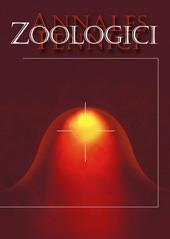Teeth are essential in mammals for the capture, handling and processing of food and self-defense. The rate of deterioration may affect longevity and indicate certain environmental conditions. The goal of this study was to characterize tooth conditions of moose (Alces alces) from multiple regions and to make inferences of possible causes of variation. An assessment of > 5500 moose incisors, found that the frequency of breakage and rate of decline in incisor integrity, with age, was much higher in Cape Breton and Newfoundland (breakage from 6% to 47%) than in New Brunswick, Ontario, New Hampshire, Vermont, and Yukon (breakage from 1% to 6%). Incisai degradation, among jurisdictions, differed significantly though population age structures did not appear different. The two jurisdictions most affected by incisai deterioration, Cape Breton and Newfoundland, are inhabited by genetically distinct subspecies, at higher densities than other regions; therefore, breakage may be linked to local environmental conditions.
How to translate text using browser tools
1 August 2010
The Spatial Variation of Extreme Tooth Breakage in an Herbivore and Potential Age Structure Effects
Michael J. Clough,
Cynthia S. Kendall MacKenzie,
Hugh G. Broders
ACCESS THE FULL ARTICLE

Annales Zoologici Fennici
Vol. 47 • No. 4
August 2010
Vol. 47 • No. 4
August 2010




